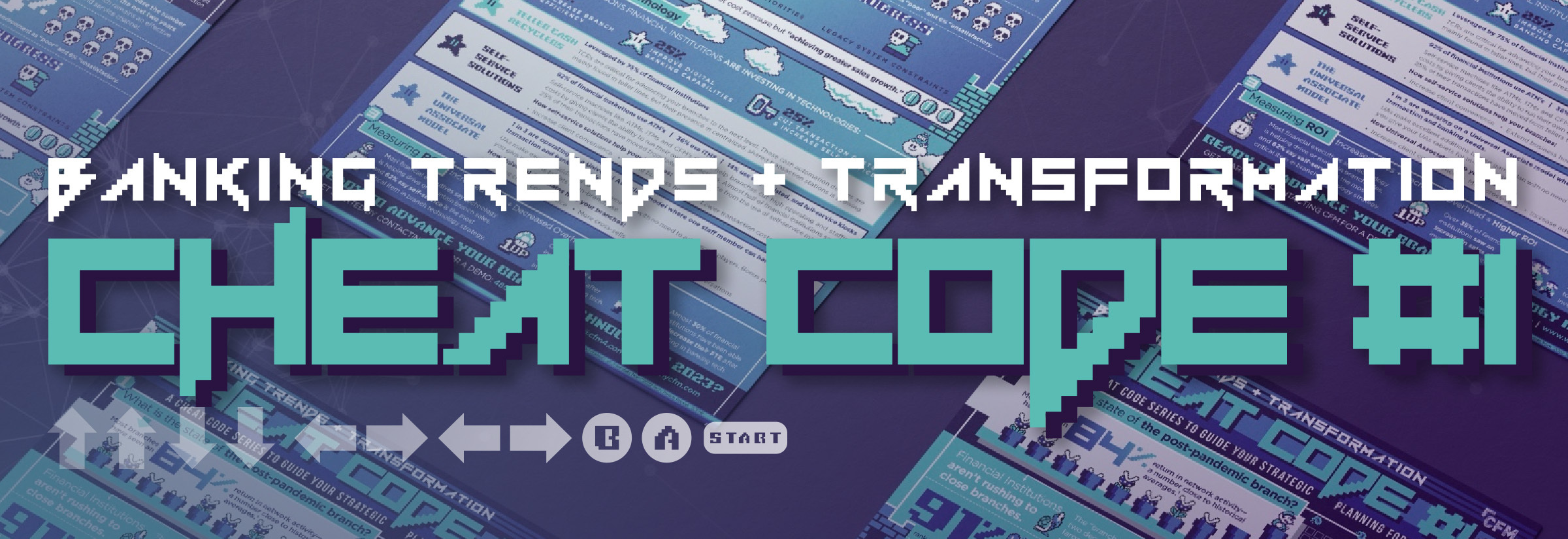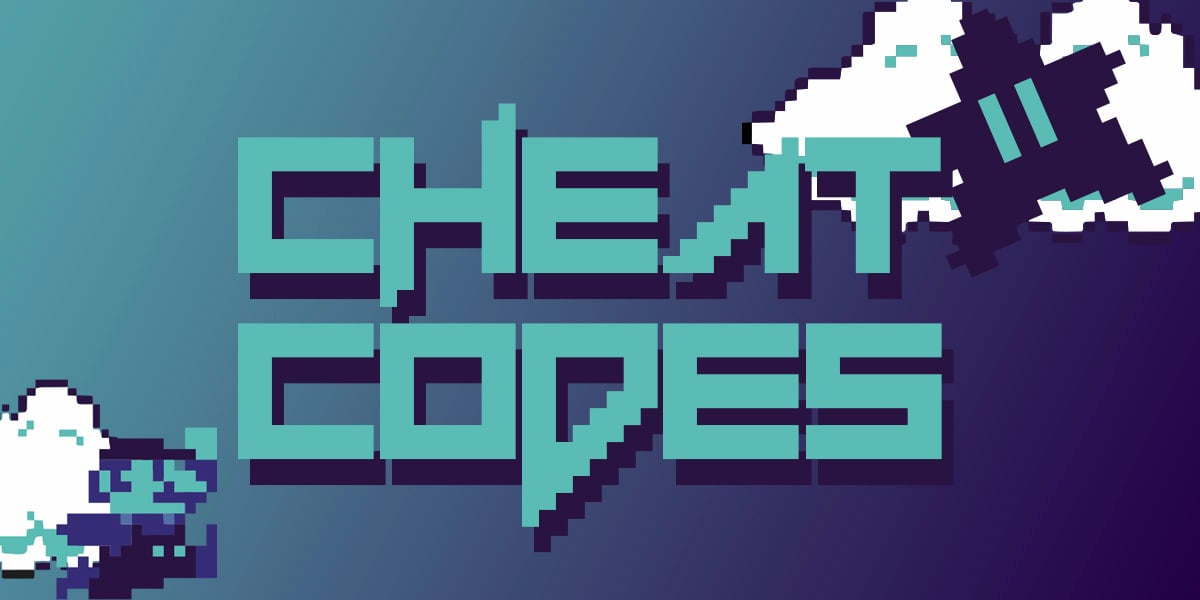The world may have gone digital, but bank and credit union branch locations remain critical to the client experience. What’s affecting operations, then, and how can financial institutions streamline to save costs and increase sales at their brick-and-mortar locations? This first blog in CFM’s Cheat Code series details what’s pertinent today.
Despite a sharp decrease of 30-50% in branch traffic during the pandemic of 2020, many financial institutions have since resumed around 80% of normal operations and activity. Not bad for an industry scaremongered into thinking that branch banking would die off quickly.
With that experience in mind, where does branch banking go from here? With the high-volume return of client traffic to physical service locations, financial and IT executives alike are asking new questions as client expectations continue to evolve. Here are three factors to consider as you plan your financial institution’s next moves in the upcoming year and beyond:

Want a copy of the infographic?
Fill out the form below and instantly have it sent to your email!
- There’s Still a Demand for Personalized Advisory Service
Branch banking in the US continues to hold a strong core value proposition despite accelerating the digital transformation of banking transactions. And although many clients no longer wish to visit their branches for everyday activities like check deposits and money transfers, they still want to visit in person for value-added services like mortgage refinancing, account opening, and financial advice. Overall, a branch bank remains an effective sales and service channel for most clients.
Looking to the future, a hybrid banking model may prove an effective tool for acquiring new clients as well as retaining existing ones. This model would combine digital and mobile banking apps for remote activities, self-service options such as ATMs and ITMs for in-branch use, and personal interaction with banking staff trained as universal associates to cross-sell services and products.
Enhance the operability of your branch locations by adding CFM’s S4 + Norm and NOMADIX technologies to your Teller Cash Recycler (TCR) lineup. Associates will be able to handle cash transactions from anywhere in the branch accurately and efficiently. Plus, you’ll eliminate individual workstation drivers, screen-scraping, dual entry processes, and lengthy end-of-day balancing processes.
- Branch Efficiency is a Challenge
With the combined costs of updating technology, maintaining physical locations, and managing workforce needs, branch banks today face significant budget pressure. In fact, almost half of the financial executives surveyed in CFM’s 2022 Tech Trends Report stated that budget constraints keep them awake at night.
While cutting costs may not be an immediate option for your financial institution, you can measure and analyze branch activities to see where inefficiencies exist; customer traffic, employee functions, and branch workflows are important activities to observe. Once patterns are identified, you can pinpoint what to target for improvement and decide where it’s most cost-effective to streamline.
As you collect data and explore options, some key tactics to help drive efficiency within your branches include optimizing your staffing through cross-training & NOMADIX, automating cash handling operations with TCRs, and employing self-service options using ATMs, ITMs, and self-service kiosks that implement CFM’s GENIX. By combining these organizational and technological changes, you may see ROI faster than imagined through increased sales and decreased FTE.
Whether you’re thinking about purchasing TCRs or you’re utilizing them currently, ask CFM about deploying the iQ business intelligence platform. This tool provides enhanced dashboards, charts, and insights to help make data-driven decisions on purchasing, deploying, and optimizing TCRs.
- There’s a Rising Demand for Transactional Self-Service
Many clients visiting financial institutions today are more digitally savvy thanks to the acceleration of digital and mobile banking. Statistics from the market research company Ipsos found that 13% of consumers tried digital or mobile banking for the first time in 2020, and 33% have since then been using these technology tools regularly. Usage is expected to keep rising for basic transactional activities such as check deposits, account transfers, and loan payments.
Besides remote banking technology, the use of ATMs and ITMs at branch locations has increased rapidly over the past few years, and clients now expect to have easy access to these technologies when visiting a branch’s drive-thru, lobby, or self-service area. With enhanced transactional and video teller capabilities, an ITM can do almost all the transactions that a live teller can do, making it a good choice for backing up a busy branch lobby or extending services outside of traditional hours. It’s even possible to upgrade existing ATMs to ITMs depending on the age of the ATM fleet.
Overall, the self-service machine market is expected to grow exponentially, reaching a market cap of $2 billion by 2031, according to Allied Market Research. In fact, one-quarter of all financial institutions were using ITMs by the summer of 2021, and another 60% were planning to deploy them in the next three years. To that end, those surveyed in CFM’s 2022 Tech Trends Report said that self-service solutions were the top critical priority in terms of banking technologies.
Add to your self-service, assisted-service, and full-service capabilities by adding GENIX to your kiosks and NOMADIX tablet-based banking to your branch locations. Clients will be able to handle most teller-based transactions at their own convenience, and your staff can step in as needed.
Conclusion
Assessing the needs of your branch banking locations requires a significant amount of time and research, and trends today are markedly different than they were several years ago. As a leading software integrator for cash automation devices and an innovative branch strategy group, CFM can help you determine where inefficiencies lie in your network and help you discover technology options you can deploy to level up your operations.
Contact CFM today for more information or to schedule a demo.
